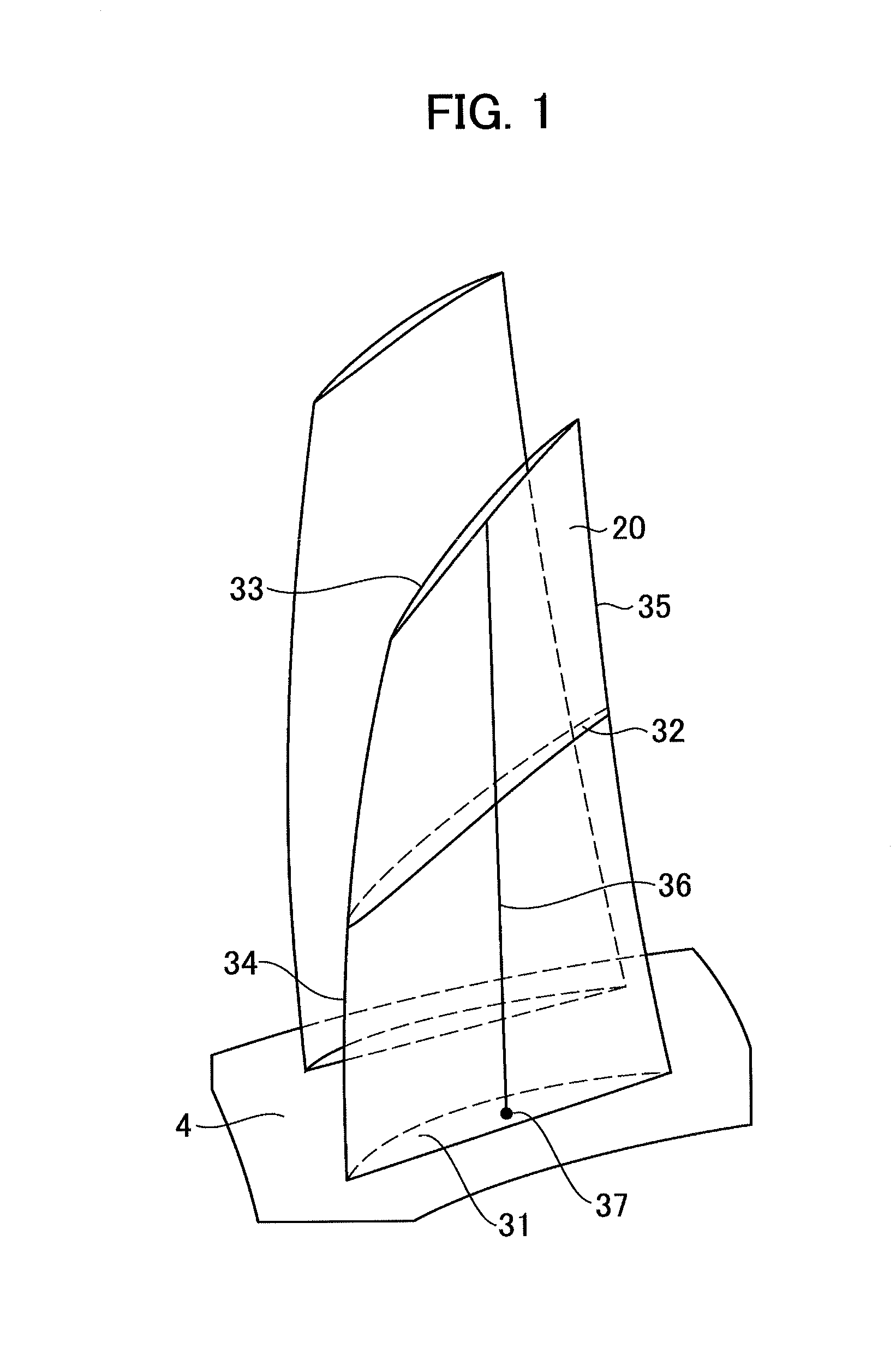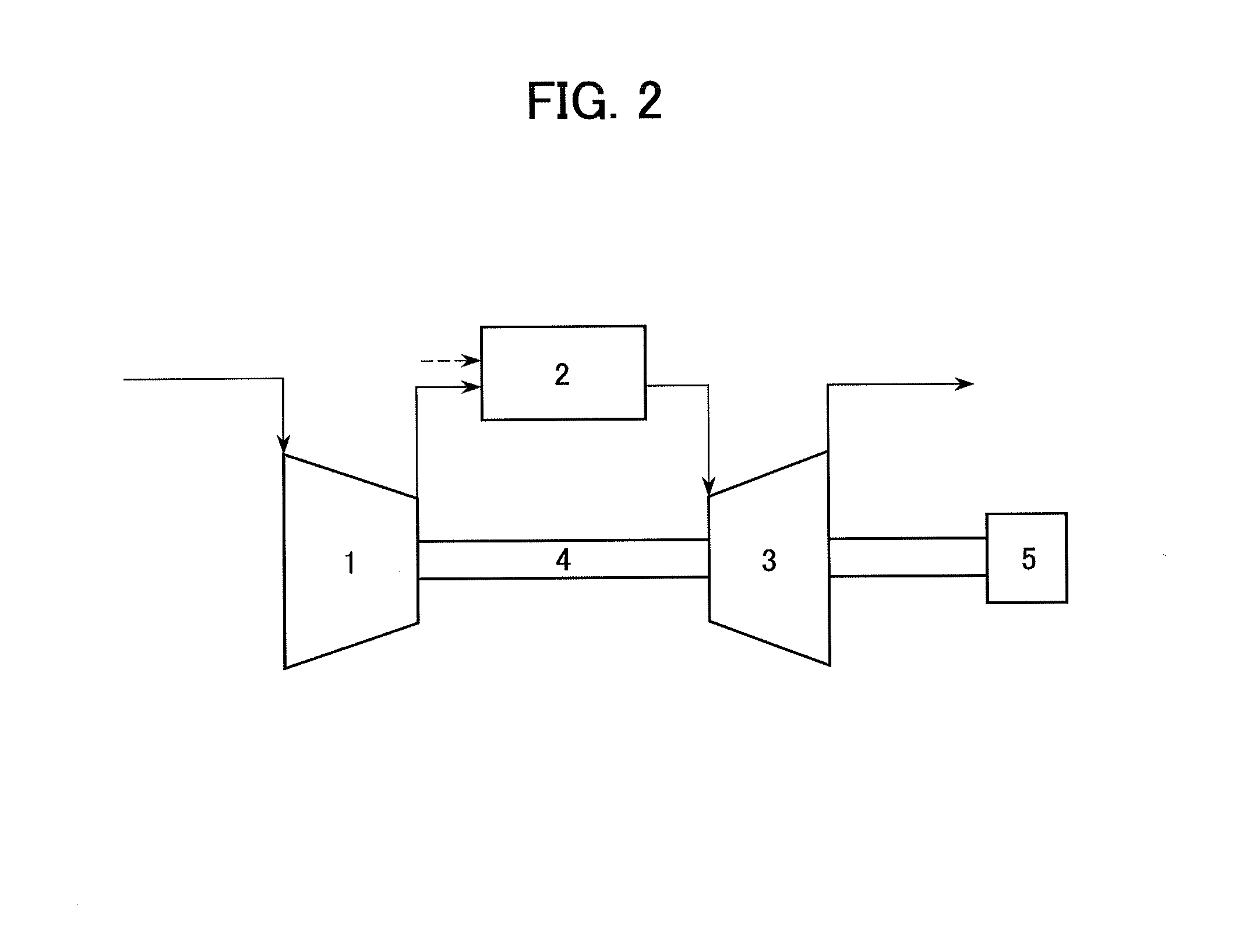Transonic Blade
a technology of transonic blades and blades, applied in the direction of supersonic fluid pumps, machines/engines, liquid fuel engines, etc., can solve the problems of restricting and achieve the effect of increasing the stall margin and reducing the loss
- Summary
- Abstract
- Description
- Claims
- Application Information
AI Technical Summary
Benefits of technology
Problems solved by technology
Method used
Image
Examples
embodiment 1
[0035]FIG. 1 is a perspective view of transonic blades according to a first embodiment. FIG. 2 is a cycle configuration diagram of an axial-flow rotating machine into which the transonic blades are built. Incidentally, a gas turbine compressor is here assumed as the axial-flow rotating machine.
[0036]An outline of a cycle is first described with reference to FIG. 2. Working fluid first flows into an axial-flow compressor 1 and compressed therein. The working fluid thus compressed flows into a combustor 2, into which fuel is injected to produce high-temperature combustion gas. The high temperature and pressure combustion gas flows into a turbine 3 to rotate a rotor 4, thereby driving a generator 5 for electrical generation.
[0037]FIG. 3 is a cross-sectional view of the axial-flow compressor 1 taken along a meridional plane. Referring to FIG. 3, the compressor 1 includes a rotor 4 or a rotating shaft; an outer circumferential side casing 12a; an inlet inner circumferential side casing 1...
embodiment 2
[0048]A comparison of the stacking line of a transonic blade according to a second embodiment is shown in FIG. 12. The second embodiment is different from the first embodiment in that the axial position of the stacking line is constant on the hub cross-sectional surface 31 side of a certain spanwise position lying between the hub cross-sectional surface 31 and the mean cross-sectional surface 32 and is monotonously reduced on the tip cross-sectional surface 33 side of such a certain spanwise position. The airfoil of the second embodiment is the same as that of the first embodiment. Incidentally, devices overlapping with those in FIG. 6 are denoted by like reference numerals and their detailed explanations are omitted.
[0049]The transonic blade 20 of the present embodiment has the axial position of the stacking line that does not vary up to a certain spanwise position. Therefore, the axial position in a range from the mean cross-sectional surface 32 to the tip cross-sectional surface ...
PUM
 Login to View More
Login to View More Abstract
Description
Claims
Application Information
 Login to View More
Login to View More - R&D
- Intellectual Property
- Life Sciences
- Materials
- Tech Scout
- Unparalleled Data Quality
- Higher Quality Content
- 60% Fewer Hallucinations
Browse by: Latest US Patents, China's latest patents, Technical Efficacy Thesaurus, Application Domain, Technology Topic, Popular Technical Reports.
© 2025 PatSnap. All rights reserved.Legal|Privacy policy|Modern Slavery Act Transparency Statement|Sitemap|About US| Contact US: help@patsnap.com



